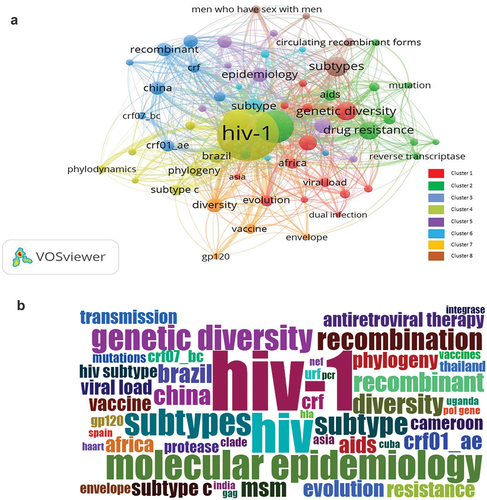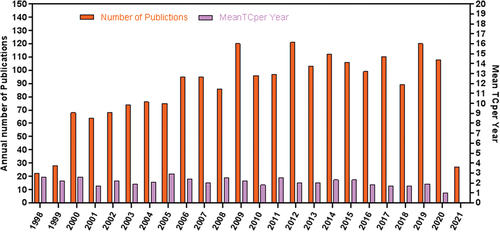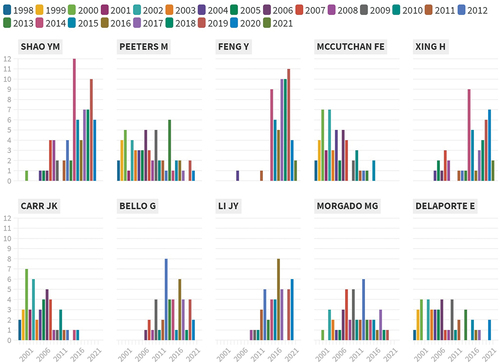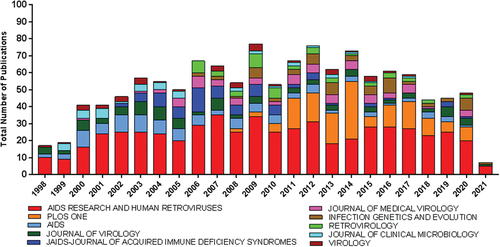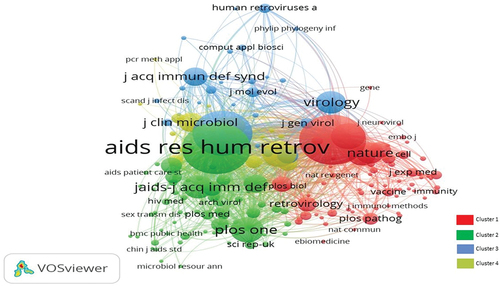Figures & data
Table 1. Main information about the retrieved data on HIV-1 genetic diversity from WoSCC database
Table 2. Top 10 most prolific authors ranked by total number of publications
Table 3. Top 10 journals in HIV-1 genetic diversity research
Table 4. Top 10 most productive institutions ranked by number of publications
Figure 4. (a) Corresponding authors’ countries annual distribution of publications. (b) Mutual collaboration between the corresponding authors’ countries in HIV-1 genetic diversity research.
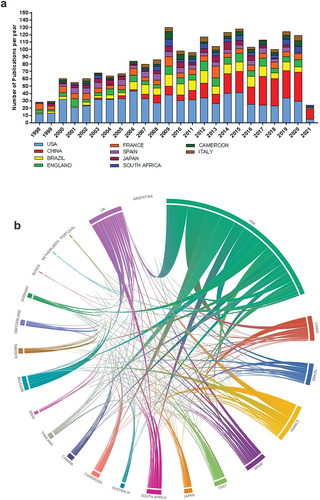
Table 5. Top 20 prolific corresponding authors countries and their collaborative publications
Table 6. Top 20 highly cited publications on HIV-1 genetic diversity
Figure 5. Coauthorship countries network visualization. Nine clusters between 50 coauthorship countries; Cluster 1 (Countries 14: Belgium, Bulgaria, Denmark, Finland, Greece, India, Israel, Italy, Luxembourg, Mexico, Netherlands, Romania, South Korea, Sweden; Cluster 2 (Countries 8: Burkina Faso, Cameroon, Cote Ivoire, Democratic Republic of Cango, France, Gabon, Republic of Cango, Senegal); Cluster 3 (Countries 6: England, Pakistan, Scotland, Uganda, USA, Zambia); Cluster 4 (Countries 6: Australia, Japan, Malaysia, China, Taiwan, Thailand); Cluster 5 (Countries 5: Angola, Argentina, Brazil, Peru, Portugal); Cluster 6 (Countries 4: Cuba, Russia, Spain, Switzerland); Cluster 7 (Countries 3: Canada, Iran, Kenya); Cluster 8 (Countries 3: Germany, South Africa, Tanzania); Cluster 9 (Countries 1: Nigeria).
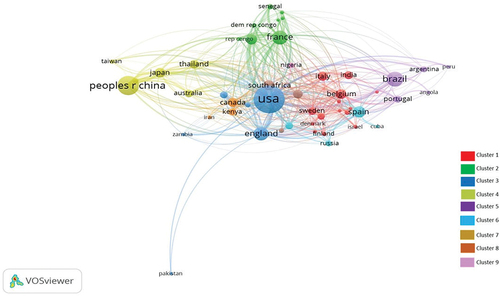
Figure 6. (a) Author keywords co-occurrence network visualization. Eight clusters were formed; Cluster 1: (13 keywords) Cluster 2: (10 keywords), Cluster 3: (9 keywords), Cluster 4: (9 keywords), Cluster 5: (7 keywords), Cluster 6: (6 keywords), Cluster 7: (4 keywords), cluster 8: (4 keywords). (b) Authors’ keywords wordcloud visualization analysis.
